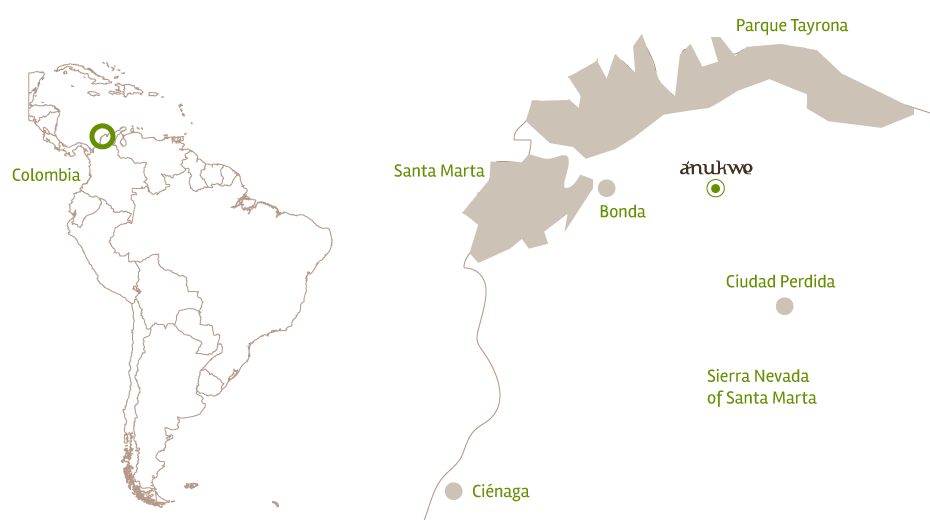Anukwe sits in the lowlands of the Sierra Nevada de Santa Marta, a coastal mountain range facing the Caribbean Sea in Northern Colombia.
The Andes Mountains
As the lifeblood for 75% of South Americans, the prodigious Andes Mountains that run through the continent are one of the richest sources of biodiversity on the planet. Part of this range, the Sierra Nevada of Santa Marta, occupies the Northern coast of Colombia and is one of the world’s highest coastal mountain ranges. While it’s just the initial stretch of the Andes, the Sierra Nevada occupies over 17,000km2 and is the source of over 36 rivers.
Concentrated within this region is an ecosystem rich in flora, fauna and natural beauty, where verdant mountains meet the crystal blue waters of the Carribean. The uniqueness of the natural landscape has drawn a steady increase in leisure tourism in recent years.


Colombia’s Boom in Tourism
Overall, tourism to Colombia is the fast growing in the region, attracting an increasing amount of international visitors and leading to higher hotel occupancy rates, especially in the northern hubs of Cartagena and Santa Marta, the largest city within the Sierra Nevada. More of these tourists are exploring the nation’s national parks such as the Corales del Rosario and Tayrona Park, and to a lesser degree the Sierra Nevada and the Ciudad Perdida, with opportunities to see the unique wildlife in close proximity to the country’s famed beaches.
Developing a model for Mindful Tourism in the Sierra Nevada
We believe the Sierra Nevada has the potential to be a major destination for Colombian tourism, and is predominantly an underdeveloped region for leisure tourism.

Our project intends to keep it this way. Deforestation has already reached 70% in this region, largely because of industrial agriculture. This poses a great threat to the nearly 3,000 different plant and animal species occupying these lands, many of them considered endangered, not to mention the four main indigenous communities in the region. Currently, the Colombian government allocates just 0.5% of its GDP to environmental protection purposes, one of the lowest rates among members of the Organization for Economic Cooperation & Development (OECD).
As the growth in tourism is inevitable but also welcome, this project looks to promote not only conservation and preservation through reforestation but also a more mindful approach to tourism in the region.
This is tourism that can be low impact, educational, restorative – heightening awareness of the Sierra Nevada’s great beauty and vulnerability – while also generating revenue for continued conservation efforts in the region.

